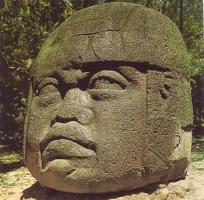Copy Link
Add to Bookmark
Report
The CyberSenior Review Volume 4 Number 1

start cybersenior.4.1
====================================================
************
* THE
* CYBERSENIOR
* REVIEW
************
===================================================
VOLUME 4 NUMBER 1 JANUARY 1997
===================================================
The CyberSenior Review is a project of the Internet
Elders List, an active world-wide Internet Mailing
List for seniors. The Review is written, edited and
published by members of the Elders for interested
seniors worldwide. Contributions from non-Elders
are welcome. Please query one of the editors first.
Contents copyrighted 1997 by the Internet Elders
List and by the authors. All rights reserved by the
authors. Quoting is permitted with attribution.
The editorial board of The CyberSenior Review:
Elaine Dabbs esudweek@mail.usyd.edu.au
Pat Davidson patd@chatback.demon.co.uk
James Hursey jwhursey@cd.columbus.oh.us
======================================================
CONTENTS, Volume 4, Number 1, January 1997
EDITORIAL by Pat Davidson
MUSICA EN LOS BARRIOS (PART II) by Dorothy G. Barnhouse
Dorothy concludes her heart-warming story of music and
conversion in the poor barrios of Nicaragua.
THE GOOD SHIP MARY ROSE by Lotte Evans
A little tray on Lotte's kitchen bench leads to the
history of this gallant old ship-of-the-line.
"RESOLATIN'" THE NEW YEAR by Langston Kerr
Lang, in his inimitable Texas way, ponders New Year's
and whether endin' the bad, or startin' the good
is the best way to look at a new year.
IF I WERE FROM A DIFFERENT PAST, a poem by Eloise Blanpied
Eloise's elegant sonnet ponders life.
==============================================================
EDITORIAL
by Pat Davidson
The Romans had it right when they named January after their god
Janus, the god that looked both forwards and backwards. The New
Year gives us the opportunity to do just that, looking over the
events of the past year yet looking forward to the future. We in
the northern hemisphere have much to look forward to, when the
the spring flowers are about to bring colour to the gardens that
have lain dormant, but we must also remember that our southern
friends are about to experience their autumn and winter.
One of the treats in store for us in this New Year is this new
issue of the Review, which, though running a little late, is,
we think, worth the wait, as it has interesting articles (and a
poem) from different corners of the world: Nicaragua, where Dorothy
completes her account of her music making with the children of
the barrios of Managua; Australia, where Lotte remembers life in
the days of King Henry VIII as she visits the "Mary Rose"
exhibition in Portsmouth, England; and Texas, where Langston and
his wife Marie have different ways of dealing with the year to
come. To finish, we have a thought-provoking poem from Eloise,
who comes from the USA.
Yes, we have started the New Year well, with much to look forward
to. I hope you enjoy the read as much as I've done.
===============================================================
MUSICA EN LOS BARRIOS (PART II)
by Dorothy G. Barnhouse
(Dorothy continues her story, started in the last issue, of how
she has helped to bring music to the poor barrios of Nicaragua.)
II. WHAT ARE WE DOING NOW?
Twenty-five teen-teachers are teaching about 200 children in 12
barrios. Three times we have gotten all the children together to
give a concert in the large auditorium of UCA (Universidad
Centroamericana). In addition to the recorder and basic music
classes, the kids are learning songs, dances and rhythmical
games. During 1994 and '95, I gradually phased out my
involvement at the agricultural college. Somehow the kids
changed my mind about what was "really important work." For many
of them, the time they spend with Musica en los Barrios is about
the only opportunity they have to develop individual skills,
learn group cooperation, give flight to their imagination and
practise a sense of discipline.
Who are some of these children?
Maria Jose was a tiny silent child. She never spoke, hid her
face if asked a question. I even wondered if she were autistic.
But when the choir sang, she looked up and sang too. Later she
began smiling at the other children, and even playing with them a
bit.
Karla always wore a pleasant smile, but her expression never
changed, her eyes seemed vacant and she would only nod and agree.
She had a totally chaotic sense of rhythm and although she always
nodded, she didn't seem to understand anything. I even wondered
if she were perhaps brain damaged. But not trained to recognize
or help children with such problems, I decided to do the only
thing I knew to do, namely, to develop her sense of rhythm. Six
months later she was able to conduct simple pieces in 3/4 and 4/4
and could play smooth passages of quarter notes and eighth notes
on the keyboard. She never lost her pleasant smile, but her eyes
were no longer vacant. She began asking questions and making
little jokes. No question of brain damage.
Maria Eugenia was about 14, and was one of the original eight
kids in my first choir. When I brought the first recorder to
show them, she shyly asked if she could borrow it during the
week. Now she is one of the teen-teachers, and herself plays
Bach Minuets, a Handel Bourree, a Purcell Chaconne. She has
another year to go to get a B.A. in psychology at the Jesuit
University. Her parents are illiterate. Maybe she will be one to
help take over the program when it is time for me to leave.
Eddy was a savage, dirty little boy who used to come to throw
dirt and stones through the window during choir practise. The
other children told me he was crazy and avoided him. Nothing I
tried worked to keep him from bothering us. One day in
desperation I grabbed him and hauled him into choir practise
yelling, "Sit down there and shut up and stop bothering us!"
A huge smile spread on his face and he began singing along. He
knew all the music and words of all our songs from having hung
around outside. In his own inimitable way, he had simply been
asking for an invitation to join. I found out he had fallen on
his head when a baby, and had never developed normally. He had
an older brother in the choir who totally ignored him, and his
mother did no more than feed him and then turn him out into the
street for the day. He became a faithful and well-behaved member
of the choir, but nobody wanted to sit next to him. After a
little basic research, I discovered the problem and got one of
the older boys to take him under his wing about bathing and
finding clean clothes before choir practise. Problem solved. He
improved enough that he was accepted into a special school for
retarded children.
I rejoice that it has been given to me to work in this alien land
where the electricity often fails, the water is off whenever the
engineers downtown think there isn't enough to go around, the
potholes are life-threatening and the temperature seldom goes
below 30 degrees C. Six months of the year everything is covered
with dust, and the other six with mud, unless there is another
drought (increasingly frequent as the rain forest is cut down) in
which case, more dust. This is an alien land where nothing
happens on time, few commitments are kept, where in fact very few
things work. A friend in the north asked me, "Well why do you
stay there if it is so awful?" I could only answer, "Because I
love my work." She thought for a minute and said, "I cant
remember ever hearing anyone here in the north talk about their
work with that tone of voice. You are very lucky." Right.
Musica en los Barrios is only a few years old, but it would never
have been born without the ten years of work by Padre Angel in
Batahola. The character of this barrio is strongly influenced by
the presence of this cultural center. In addition to music,
which was Angel's first offering to the children, and which is
the glue that continues to hold the center together, the center
now offers classes in typing, English, computers, hairdressing,
sewing, massage, cooking, herbal medicine, carpentry, radio
repair... But when the youth choir/orchestra performs, few of
the families come. Many of the teen-agers spend all their spare
time at the center with its well-tended gardens, brightly
painted murals and hum of activity. Home is often a dirt floor
with a tin roof, one light bulb, a blaring TV and too often, an
abusive or alcoholic adult.
Now with their new role as recorder teachers, some of these teen-
agers have gone from being passive recipients of charity from the
rich north, to being active multipliers of what they have been
given. The $2.25 per class they are paid by the project is
important to them and to their families. Perhaps more important,
they are learning to understand a contract, keep records, make
and follow lesson plans, and to be answerable to the children and
to the demands of the project. Most Nicaraguan young people
don't have a chance to experience any of this. Little by little,
the group of teachers is learning to assume responsiblility for
giving tests, making monthly reports, plan concerts, and all the
other details necessary to make the program run.
In '94 and '95 we had an annual budget of $7,500, half of which
went for hourly wages to the teen-teachers, the rest to
transportation, materials, instruments, and salaries for me and
Nelly. The money all comes from small donations of individuals
in Europe and North America.
III. WHAT IS OUR FUTURE?
It is time for me to think of leaving Nicaragua. In the
development lingo there is a much used phrase, - "sustainable
development". A project has to be able to keep going on its own
momentum when the foreigners or development workers leave.
Just as I withdrew from the agricultural college, now I am
withdrawing from the front lines of Musica en los Barrios,
devoting my time almost exclusively to teacher training and
curriculum development. In Nelly Morazan, we have a reliable and
capable future director. The Batahola teen-teachers are assuming
more and more responsibility. Two of them calculate the payroll
each month. Another supervises the giving of tests to the
children as they pass from one level to the next. Another is
helping Nelly teach songs and rhythmic dances to elementary
school teachers. Two of them are teaching guitar to children who
have proven their determination to learn music. One is little by
little taking over the administration of the project from me.
Sometimes it seems to me those things are more important than the
music. If they aren't done well, it is certain that the music
will begin to suffer very rapidly.
My vision is for the direction of the project to pass more and
more into the hands of Nelly Morazan and the Batahola teen-
teachers, and whomever else we may find to help them. But after
I leave Nicaragua, some time in 97 probably, I will continue to
raise money and to visit once a year to bring them any training
or materials they may need.
In some ways, our very success with the children is beginning to
cause problems. For instance, what are we going to do with three
neighbouring barrios each of which has a small handful of kids
who have reached level three? That means they are ready to learn
the alto recorder too and begin playing in small ensembles. But
there aren't enough children in any one barrio do to ensembles.
Because of the dangers of urban life (traffic, criminal gangs,)
the children can not leave their own barrio to join together in a
central place. If there were some way to get the kids from those
three barrios together, we might begin to create a mini-cultural
center. But we are well aware that this may be a "First world"
type idea, which is not growing organically from the roots which
have dug themselves in here. We are waiting.
At first we opened classes in small community groups. But often
the infrastructure to support the group was quite frail and
faltered if one key person were absent or busy. For instance,
many homes dont have clocks. How are the kids to know that it is
time to get ready to go to the recorder lesson unless an adult
reminds them? Or there are no phones, so nobody lets the teen-
teachers know that the kids all have a school commitment this
Saturday and cant have recorder class. The teen-teachers travel
across town for nothing. For this reason the last two new
groups we opened were in public schools. Maybe the firmer
infrastructure will mean less wasted time and energy. We will
see.
We see no reason to doubt that Musica en los Barrios will in time
bring some of these advantages to other children in other poor
barrios. But it would be a mistake to judge the "success" of the
program solely this way. If one child has had a happier half
hour than s/he would have had at home, if one child has had an
awakening of awareness of a skill, if one child has had a feeling
of comradeship in making a beautiful sound with ten other
children when none could have made it alone, if one child has
followed his or her imaination down the path of the songs and
dances from all over Latin America, Israel, Negro Spirituals and
the rest of the great human spectrum of experience, the program
is already a success, even if we cant promise the children a
"successful" future.
Dorothy Grace Barnhouse Musica en los Barrios
Casa J-608, Col. Centroamerica Managua, Nicaragua
tel/fax 505-278-4972 e-mail dorothy@ibw.com.ni
===============================================================
THE GOOD SHIP MARY ROSE
by Lotte Evans
On one of my kitchen benches sits a little handy tray which I
bought several years ago at a flea market for a dollar. On this
tray is a picture based on the only contemporary illustration
existing of the gallant ship the Mary Rose which was the pride
and joy of Good King Hal, better known as Henry VIII, the much
married King of England.
The Mary Rose was a warship and as such fought gallantly in
several battles but disaster struck when she sank during an
engagement with a French invasion fleet a mile and a quarter from
the entrance to Portsmouth Harbour in forty feet of water. For
the men on board there was no recoiling or fleeing. Soldiers,
gunners and archers were trapped at action stations, either
between decks or beneath the heavy netting which covered the
weather deck in the waist of the ship. King Henry and his
entourage witnessed the battle on shore and eyewitnesses
described the heartrending cries of the stricken ship's company.
There have been many ship wrecks throughout history and most of
these wrecks still lie wherever they sank but not so the Mary
Rose. Amateur divers started to search for the ship on the sea
bed and in 1965 it was found by using sonar.
From the day of the discovery until 1982 six hundred volunteer
divers and large number of scientists, archeologists and many
more volunteers on shore were actively engaged in the preparation
of the raising of the Mary Rose which occurred on the 11th
October 1982.
Now after this brief description of the history of this ship we
will get back to my little tray. You see looking at it daily
when I made my coffee I got this hankering to see what the Mary
Rose looks like now. And that's exactly what I did on a
wonderful visit in the company of Elders Listowner Pat Davidson
to the Portsmouth Historic Dockyard which is home to three of the
world's greatest historic ships, the Mary Rose, HMS Victory and
HMS Warrior 1860.
I must admit I gave the HMS Warrior the go bye, not because I
would not have liked to see it but I headed straight for the Mary
Rose Exhibition and never noticed the Warrior.
Before we entered a guide handed each visitor a handheld device
which contains an audio tape which provides a tremendous amount
of information about every part of the ship.
We entered a large hall and there behind glass lay what could be
saved of the wreck. It is quite an awesome sight. The ship stands
as high as a four storey building and weighs about 350 tons,
which is half of the original 700 tons and it does look like a
cross-cut at present. One can see the various decks and the size
of the cabins and store rooms. The first impression is that the
ship must have been quite large but when one considers that the
listed crew consisted of 200 mariners, 185 soldiers and thirty
gunners. And if that wasn't a big enough crowd, one eyewitness
account claims that there were 700 men on board when she sank.
The starboard side cannot be seen by visitors at the present time
but there are plans to include a viewing gallery all around the
wreck.
But it isn't just the ship which makes this visit interesting.
There are innumerable items which are on show. For example the
complete barber surgeon's chest and all its tools, amongst them
three metal syringes for urethral injections (makes you twinge
doesn't it), cauteries for the amputation of limbs and assorted
ointments can be seen.
There are exhibits of the cobbler's work bench, how the ships
crew passed their leisure hours, what they wore and what they
ate.
Although the ship carried seven heavy bronze guns and thirty-four
heavy iron guns more than 3,500 arrows and 138 whole longbows
were recovered from the ship and a large number are on show.
Some 200 skeletons were found, nearly all of them of young men in
their twenties with an average height of 5 foot 7 inches. I am
mentioning this because quite a number of them had been archers
with a marked skeletal shoulder development accentuated by their
profession. I could just imagine those guys pulling a six foot
six longbow; no wonder they had wide shoulders.
There is also a video one can watch. It shows the raising of the
Mary Rose. Prince Charles, who is the President of the Mary Rose
Trust, was in the forefront watching this momentuous occasion. A
reporter suggested the Prince to step on to the wreck when it
came to a halt. The reporter felt it would be rather symbolic.
The Prince declined. I thought that reporter must have been a
knucklehead. I could just imagine what could have happened if
the Prince would have stepped on the wet timber, slipped off, or
even worse busted something and headed straight into the briney
deep.
It was a wonderful experience and I do hope that I will be able
to visit Portsmouth again as there is so much to see. After all
I ONLY saw the Mary Rose, missed the HMS Warrior and had just
enough time to gape at Nelson's Flagship the Victory.
Going back by train to London, one of the passengers told me that
she was on a visit from the States and that she had a marvellous
time at the Naval Museum where she managed to verify that one of
her ancestors had been a midshipman on the Victory. I asked her
what she had thought of the ships. She told me that she wasn't
interested in them at all. All her interest was centred around
genealogy.
Ah well I thought, it takes all kinds.
***
As a final note to my Mary Rose adventure, I did a quick web
search and came up with the following results: "The search found
46 pages containing: Mary followed by Rose and Portsmouth" listed
here are just a sample of these sites:
http://www.resort-guide.co.uk/portsmouth/marhert.htm
http://www.resort-guide.co.uk/portsmouth/attracts.htm
http://www.rchme.gov.uk/hnew08.html
Enjoy yourself!!
===============================================================
"RESOLATIN'" THE NEW YEAR
by Langston Kerr
Well, we got us a new year a lookin' us in the face! It's one of
them times, if you're like most people, that takes a look
back'ards to see what '96 was like and you wonder what '97 is
gonna be like. Hope it's a good'un.
Have you made you any new year's resolations? If you're like the
most of us, you've got a whole big bunch of 'em made and about
half of 'em busted by now! They's this ole sayin' about new
year's resolations bein' meant to be broke and I'm a thinkin'
that most people that make'em really don't have no more idea of
keepin' 'em than a duck does. That bein' the case, they ain't no
use in piddlin' with 'em in the first place. That's the way I
look at it.
Them new year's resolations is important. You ort not have get uh
idea in your head that it's jist somethin' you do one time a year
and then you stick your list up somewheres and ferget all about
it. Jist makin' up resolations can tell you all kinds of things
you ort to know about yourself. But if you turn right around and
ferget'em after you get through makin'em, that tells you a whole
lot more.
I like new year's resolations, myself. It's kinda like when you
get to the end of the old year, you look back on it and see what
you done right and what you done wrong. Then you make up your
mind that in the year to come, in 1997, you're gonna do better
than what you done in '96. It's like you take stock of where
you've been and you try and figger out where you're goin' next
year. The trouble is, most of my lookin' back is seein' what I
done that I don't want to do no more. I see things I've done back
there that I don't partic'lar like and I make me a resolation not
to do 'em in the comin' year.
Marie ain't like that, though. She don't look at things like I
do. She'll take and go back over the old year and try and figger
out what it was that she done right. Then she'll center up on
that. She says the way she looks at it, they's plenty of folks
around to tell you where you've gone wrong and messed up. So she
don't have to fool with that. That's took care of. She says the
onliest thing left is fer her to look at is the things she's done
right.
Marie says she's one of them that would a whole lot druther
'start' doin' somethin' than to quit doin' somethin'. She says
the way she looks at it, you can quit this and quit that and quit
somethin' else and, next thing you know, you ain't doin' nothin'
atall. Not doin' nothin', the way she looks at it, is worser than
doin' somethin', even if that somethin' happens to be the wrong
thing to do. Besides, she says that not doin' nothin' is the lazy
way out. Ain't nothin' wrong with bein' lazy sometimes, but you
ort not to make a whole life out of it. They's a lot more to life
than jist settin' around thinkin' about quittin' somethin' all
the time.
That makes sense, I reckon. In a way it does. I ain't never
looked at it like that before. One thing about it, if it was me,
lookin' at the list of right things I done would prob'ly shorten
the list of stuff I had to look at a right good bit.
Me and her talked about that some here the other day and Marie
says you can tell what kind of a person somebody is by how they
look at things like that. She says that if you come up on
somebody that decides they're gonna quit doin' somethin', that
tells you one thing about'em and if they come up with somethin'
they're gonna start doin', it tells you somethin' else about'em.
I don't know which one is worse. Is it worser when you're doin'
somethin' you ort to quit doin' or is it worser when you ain't
doin' somethin' that you ort to be doin'? Or it might be the same
thing.
Take the case of somebody that's too fat. That's one I can relate
to real easy. Maybe I decide I'm gonna quit eatin' so much so I
can lose some weight. Well, they ain't nothin' the matter with
that. Lord knows I could stand to shed a few pounds. But, then,
you got Marie standin' over there and she says she's gonna start
eatin' right so's she won't be fat no more. See what I mean? Both
of us said about the same thing, but we're lookin' at it from two
whole different angles. I'm sayin' I'm gonna quit somethin' and
she says he's gonna start somethin'.
I don't know which way is the best. I look at things from the
quittin' end of the pipe and Marie looks at it from the startin'
end. She puts up a purty good argument fer startin', but the way
I look at it, they's more to it than that. Life ain't all black
and white like that. I'm all fer doin' somethin' that's good and
right, but, on the other hand, if I'm doin' somethin' that ain't
right, the thing fer me to do is quit. All the do-goodin' in the
world ain't gonna make up fer it if I'm doin' mean things. I got
to stop doin' the mean things I might be doin' before my do-
goodin' is gonna do any good. See what I mean?
I guess in the end it don't matter much matter which way you look
at it. The important thing is doin' somethin' about it after you
get through talkin' about it.
I ain't made but one resolation, but I'm stickin' to mine. It
might not change my life, but even if I make this one little
bitty change, it'll be fer the better. I'll be that much better
off this time next year than I am right now.
Who knows? By the time I'm 500 years old, maybe I'll be a purty
good ol' boy!
===============================================================
IF I WERE FROM A DIFFERENT PAST
by Eloise Blanpied
If I were from a different past, I'd know
How death is linked to life as life to death.
I'd know that Meaning stirs up every breath
And is the cause that ancient seeds will grow.
I'd see God's plan wherever I would go
And feel the old and new as One and yet
As two. I'd breathe my last with no regret
And welcome warmly what His plan would show.
But from my past I've heard no solid thought
That argues well for being beyond life.
It matters not to me that life is all;
It's all I want. And, if I could, I'd stall
The end and ever keep the joy and strife
Of my good world that chance and choice have wrought.
===============================================================
end cybersenior 4.1




















